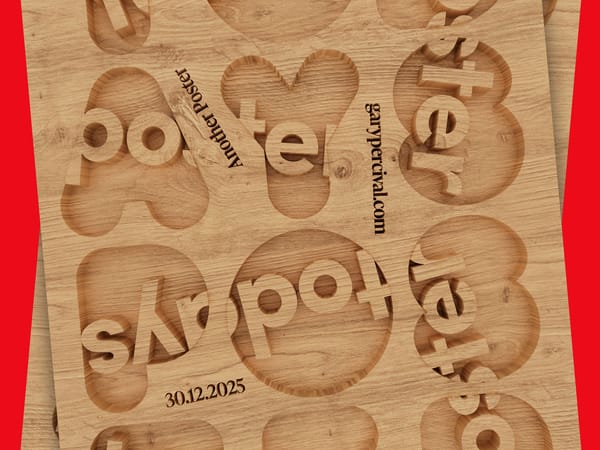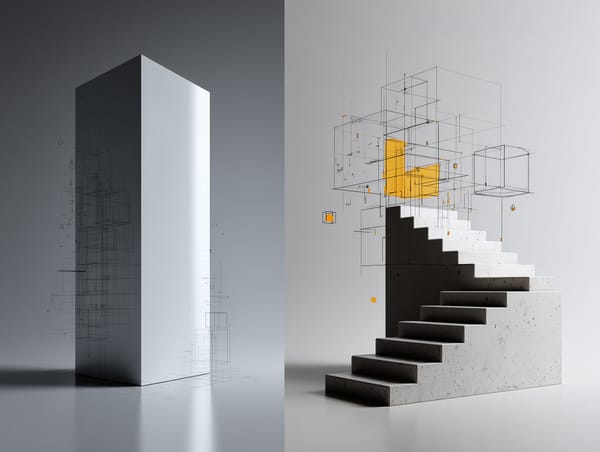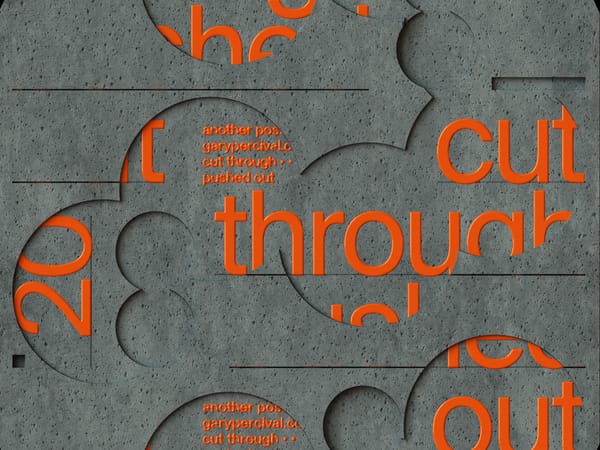The Path of Least Resistance: Why Structural Change is Key to Personal Growth
“The power to change your life doesn’t just lie in changing yourself; it lies in changing the world around you.”

As creatives, we're constantly seeking ways to improve our craft, expand our skills, and grow both personally and professionally.
We attend workshops, read books, and practice endlessly.
But what if the key to unlocking our true potential lies not in working harder but in changing the very structures that surround us?
Understanding the Path of Least Resistance
The concept of the "path of least resistance" comes from physics—it's the path that requires the least energy for an object or system to follow. In nature, we see this principle at work in the way water flows downhill, always seeking the easiest route.
But here's the thing: this principle doesn't just apply to rivers and electricity. It applies to us, too.
As humans, we naturally tend to follow the path of least resistance in our lives and work. We gravitate towards habits and behaviours that feel easiest or most comfortable, even if they're not always the most beneficial for our growth.
The Invisible Architecture of Our Lives
Think about your daily routine as a creative professional. The tools you use, the space you work in, the schedule you follow—these elements form an invisible architecture that shapes your behaviour and output.
This structure isn't inherently good or bad. It's simply the current path of least resistance in your life. The question is: does this path lead where you want to go?
Why Willpower Isn't Enough
When we want to make changes in our lives or work, our first instinct is often to rely on willpower. We tell ourselves we'll work harder, focus more, or be more disciplined.
But here's the hard truth: willpower is a finite resource. It's like a muscle that gets tired with use. Relying solely on willpower to overcome the existing structures in our lives is an uphill battle—and one we're likely to lose in the long run.
This is why New Year's resolutions often fail and why so many of us struggle to maintain new habits, no matter how beneficial we know they are.
The Power of Structural Change
Instead of fighting against the current structures in our lives, what if we could change those structures to naturally guide us towards our goals?
This is where the power of structural change comes in. By altering the invisible architecture of our lives, we can create new paths of least resistance that align with our aspirations.
Let's look at some practical examples of how this might work for creatives:
1. Physical Environment
Your workspace has a profound impact on your creativity and productivity. Instead of constantly battling distractions, why not redesign your space to naturally encourage focus?
This could mean:
- Creating a dedicated workspace separate from your living area
- Organising your tools for easy access
- Using colour and lighting to influence your mood and energy
2. Digital Environment
In our digital age, our online spaces are just as important as our physical ones.
Consider:
- Customising your computer's home screen to showcase inspiring work
- Using website blockers during work hours to prevent mindless scrolling
- Organising your digital files in a way that makes sense for your workflow
3. Time Structures
How you structure your time can make or break your productivity.
Instead of relying on willpower to stick to a schedule, create time structures that naturally guide your day:
- Use time-blocking techniques to dedicate specific hours to different tasks
- Implement a "no meeting day" each week for deep, focused work
- Create rituals to signal the start and end of your workday
4. Social Structures
The people around us have a huge influence on our behaviour and growth.
Consider:
- Joining (or starting) a mastermind group of fellow creatives
- Finding an accountability partner for regular check-ins
- Surrounding yourself with people who inspire and challenge you
5. Financial Structures
Money matters can be a significant source of stress for freelancers and creatives.
Create financial structures that support your goals:
- Set up automatic savings for taxes and lean periods
- Use separate accounts for business and personal expenses
- Implement a system for tracking billable hours and invoicing
The Ripple Effect of Structural Change
When you change the structures in your life, you're not just affecting one area—you're creating a ripple effect that can transform your entire approach to work and life.
For instance, redesigning your workspace might lead to increased focus, which could result in higher-quality work. This, in turn, might boost your confidence, leading you to take on more challenging projects and grow your skills even further.
Similarly, implementing better time management structures might reduce your stress levels, giving you more mental energy for creative problem-solving and innovation.
Overcoming Resistance to Change
Of course, changing the structures in our lives isn't always easy. We're creatures of habit, and even when our current structures aren't serving us well, they're familiar and comfortable.
Here are some strategies for overcoming resistance to structural change:
- Start Small: Don't try to overhaul everything at once. Begin with one small change and build from there.
- Experiment: Treat structural changes as experiments. If something doesn't work, you can always adjust or revert back.
- Involve Others: Share your goals with friends, family, or colleagues. They can provide support and accountability.
- Visualise the Benefits: Keep your end goal in mind. Imagine how these changes will positively impact your work and life.
- Be Patient: Structural changes take time to show results. Give yourself grace and time to adapt.
Embracing Continuous Evolution
It's important to remember that structural change isn't a one-time event. As you grow and evolve, and as your goals shift, the structures that serve you will need to evolve too.
Make it a habit to regularly assess the structures in your life. Are they still aligned with your goals? Are they still creating the path of least resistance towards where you want to go?
By embracing this process of continuous evolution, you're not just changing your environment; you're cultivating a growth mindset that will serve you throughout your creative career.
The Intersection of Creativity and Structure
As creatives, we often resist the idea of structure, fearing it might stifle our creativity. But the truth is, the right structures can actually enhance our creative output.
Think about it: when you don't have to expend mental energy on routine decisions or fighting distractions, you have more cognitive resources available for creative thinking and problem-solving.
Moreover, constraints can often spark creativity. By creating structures that channel your energy in specific directions, you might find yourself coming up with more innovative solutions within those parameters.
Conclusion: Crafting Your Path
As designers and creatives, we're used to shaping the world around us through our work. It's time we apply that same creative vision to shaping the structures of our own lives and careers.
By understanding and leveraging the principle of the path of least resistance, we can create environments—both internal and external—that naturally guide us toward growth, productivity, and fulfilment.
Remember, the goal isn't to eliminate all resistance. Some challenges are necessary for growth. The aim is to create structures that make it easier to do the things that matter most to you—to make your default mode one of progress and creativity.
So, take a step back and look at the structures in your life. Are they creating the path you want to follow? If not, how can you reshape them?
The power to change your life doesn't just lie in changing yourself; it lies in changing the world around you. By crafting your path of least resistance, you're not just setting yourself up for success—you're designing a life that brings out the best in you every single day.
Your creative journey is unique. It's time to create the structures that will support and elevate it. After all, as a creative professional, who better than you to design the architecture of your own success?



